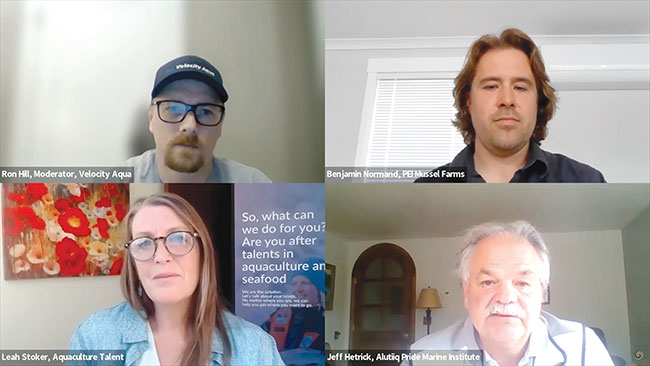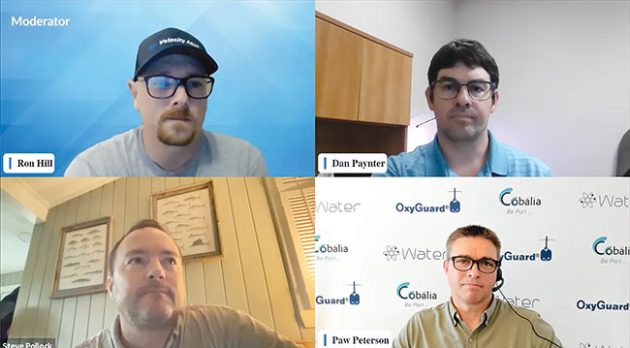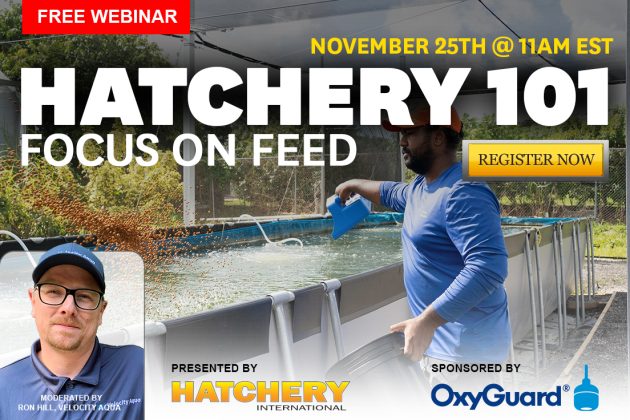
Features
Hatchery Operations
Reviewing our Hatchery 101 webinar series
November 9, 2022 By Ron Hill
 In Episode 2 of Hatchery 101, the panelists shared the challenges of recruiting new talent for facilities in remote areas.
In Episode 2 of Hatchery 101, the panelists shared the challenges of recruiting new talent for facilities in remote areas. The Hatchery 101 webinar series, sponsored by Oxyguard International, brings together aquaculture professionals from around the industry together to discuss some of the finer details of aquaculture operations and share some of their hard-earned knowledge with their peers. A diverse cast of characters from extremely diverse facilities volunteered their time in the first three sessions of 2022.
In this issue of Hatchery Hack, I wanted to reflect on some of the valuable advice and knowledge shared by these aquaculture specialists in each of our webinars.
Setting Up for Success
In the first installment of the series, we explored many topics in facility management and operation. I was joined by Cole Cochran, hatchery manager at the North Mississippi Fish Hatchery, Arlen Taylor, co-owner and operations manager of Cedar Crest Trout Farms; Amanda Luxton, hatchery manager at Ocean Falls Hatchery with Mowi Canada West and finally, David McAlpine, assistant manager at Sandplains Aquaculture.
One of the most notable themes from this episode was a focus on the importance of quality and well-trained staff. In fact, for each topic, the importance of well-trained staff surfaced as one of the most import factors in the successful management of important tasks and scenarios.
Staff that know a facility can anticipate problems, find it easier to troubleshoot issues, and know what to do in an emergency and when it’s most important.
Another key theme from this session was the huge diversity in facilities and backgrounds. Still, many similar challenges exist but there are very different ways to approach the same problem or task.
Technology and construction, species selection and water source make each aquaculture facility distinct. All the panelist agreed that redundancy is of the utmost importance, but the needed redundant technologies are highly dependant on the facility.
A great lesson to take home: technologies are great, but the right simple technology can also be effective and cost-effective.
Recruitment and training
Episode 2 brought together Jeff Hetrick, director of Alutiiq Pride Marine Institute, Benjamin Normand, PEI mussel farmer, and Leah Stoker, senior advisor of business development and head hunter at Aquaculture Talent.
Everyone agreed that it is always a challenge to recruit and train new staff for a facility. The panelists shared some of their challenges in recruiting in remote locations that are so prominent in aquaculture. Small labour pools in these locations add to the challenge and competition between farms.
Selling potential employees on work in the aquaculture industry is a key point in recruitment. Many people on the outside know little about the field and the exciting work being done in the industry. Getting information out to potential workers to pique their interest can draw in good people.
Employees entering the field are looking at their first job as the first step into aquaculture. Opportunities for growth and advancement are heavy considerations for people considering a career in any field. Workers not only want to feel valued, but they also need to see their company values their lives outside of work.
Master your monitoring
The third installment of the Hatchery 101 webinar series had panelists Steve Pollock, owner of Triple N Oyster Farm, Paw Peterson, CEO of Oxyguard International and Dan Paynter University of Prince Edward Island discuss water quality monitoring technology.
One of the first things that was apparent at this session was how water quality monitoring is very site, species, and life stage dependant. What needs to be monitored and how frequently varies greatly based on these factors.

Water quality monitoring is very site, species and life stage dependant. Panelists on Episode 3 agreed that only experience can tell the farmer what parameters are important.
Only experience can tell the farmer what parameters are very consistent or consistently need to be monitored. Time will make need apparent. That which changes quickly and highly affects the stock must be monitored constantly.
Building a monitoring system is an expensive task. Over-alarming a system can make the system cumbersome and prone to time wasting nuisance alarms. Probes and test kits come with high price tags. Experience with the facility and stock will point to the parameters that need to be tested and what the price of testing and failure to test is.
When physically building, Paw Peterson reminds to build something modular that you add to and build upon, and to avoid systems that are pre-setup and do not accept new features. These systems are more likely to be replaced than built upon.
Closing reflections
I want to thank all our panelists for volunteering their time and experience to forward the industry. Our next episode in the series is still upcoming, so keep an eye out on Nov. 25 at 11 a.m. EST. I hope you’ve enjoyed it so far.

Print this page
Advertisement
- Dried nori “superior diet” for long-spined sea urchin: U.S. study
- Top 10 Under 40: Orishaba Benjamin





